Explore with Ersilia contains affiliate links and is a member of the Amazon Services LLC Associates Program. If you make a purchase using one of these links, I may receive compensation at no extra cost to you. affiliate links are how we keep this content free. A huge thanks if you use these as it helps a lot! See the Full Policy for more information.
Wondering if visiting Mallorca during peak season is a terrible idea? I almost canceled my August trip for this exact reason! But what I discovered changed everything…
When most travelers think of Mallorca in August, they picture overcrowded beaches, rowdy tourists, and impossible-to-find parking. I had these same fears before my trip, and honestly? Some of them are absolutely valid. Mallorca IS crowded during summer – especially in those picture-perfect beaches you’ve been saving on Instagram.
But here’s my unpopular opinion after spending two incredible weeks there: the best parts of Mallorca reveal themselves when you dare to go where and when other tourists don’t.
This article summerises the best ways to avoid crowds if you decide to visit Mallorca in July or August.
Is Mallorca Overrun With Tourists In Summer ? The Donut Theory Explained
Mallorca experiences over 12 million visitors annually, with July and August seeing the highest concentration of tourists. During these peak months, popular beaches can reach capacity by mid-morning, and finding parking in tourist hotspots becomes a real challenge.
But here’s what most travel guides won’t tell you: Mallorca functions like a donut. The vast majority of tourists stick to the coastal ring, while the island’s interior remains surprisingly peaceful – even in August!
I put this theory to the test by deliberately basing myself in Binissalem, right in the middle of the island. The result? We could reach any point on Mallorca within 40-60 minutes while enjoying a dramatically different experience than those staying in tourist centers.


The Busiest Months in Mallorca: When Peak Season Truly Hits
Understanding Mallorca’s tourism patterns is essential for planning your trip:
- July-August: Absolute peak season with maximum crowds and highest prices
- June and September: Still busy but slightly more manageable
- April-May and October: Shoulder season with pleasant weather and fewer tourists
- November-March: Low season with minimal crowds but variable weather
If you’re visiting during peak months (as I did in August), implementing strategic crowd-avoidance techniques becomes essential.
Is Mallorca Just a Party Destination, especially in summer ? Beyond the Nightlife Reputation
Many travelers associate Mallorca with wild parties and beach clubs. While places like Magaluf certainly live up to this reputation, the idea that the entire island is one big party scene couldn’t be further from the truth.
During my two-week August stay, I discovered that Mallorca offers numerous havens for travelers seeking tranquility away from the nightlife. Mountain villages like Fornalutx and inland towns like Binissalem provide authentic Mallorcan experiences that feel worlds away from the coastal party zones.
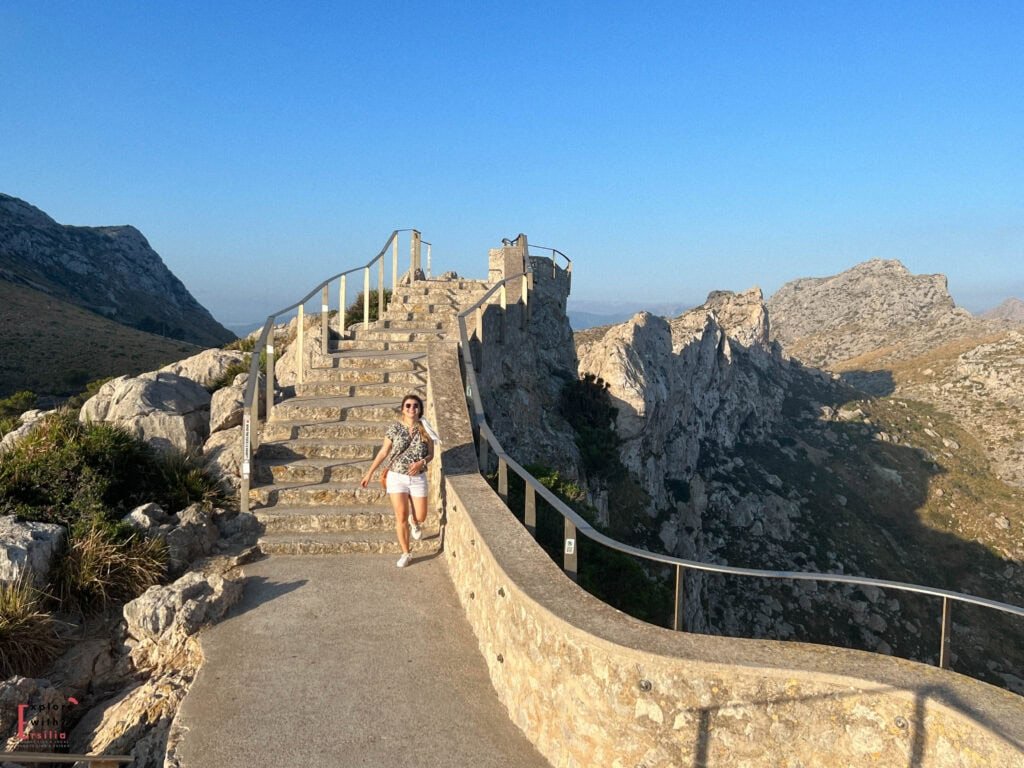
10 Strategic Ways to Avoid Crowds in Mallorca During Peak Season
1. Choose Accommodations Wisely: The “Donut Hole” Strategy
I tested the theory of staying in the middle of the island – right in the “donut hole” – and it worked brilliantly! We based ourselves at Agroturismo Es Quatre Cantons in Binissalem, and it was a game-changer for several reasons:
- We could reach any point on the island within 40-60 minutes
- Our accommodation never felt crowded, with pool baldachin beds always available
- We enjoyed homemade meals with produce from the hotel’s gardens
- We experienced authentic Mallorca away from tourist centers

Pollença Port for beaches with fewer crowds
Port Andratx for proximity to Palma without the hustle
Santanyí or Portocolom for access to southeast beaches
Farm stays near Sóller or Fornalutx for mountain tranquility
What tourism statistics don’t tell you: While coastal areas can see population increases of 300-400% during summer, central Mallorcan towns often maintain their authentic character year-round.
2. Consider These Alternative Bases Beyond Palma
Palma de Mallorca is not the greatest place to base for a summer trip to Mallorca. This is a great base for winter or spring, but during summer I advice you to get a more secluded location where you can escape the crowds at least for some hours.
Aslo, a thing to get into consideration is that Palma de Mallorca feels like a big city (think Barcelona) while coastal towns feel like a beach trip and mountain villages, at least in my opinion, fell like authentic Mallorca.
Just know that most hotels whitin Palma do not have pools. That makes sense, as this is a city with little to no free space. Having a pool is a luxury.
I still managed to find two authentic hotels, one within the old town : Hotel San Lorenzo – Adults Only (this is a pearl!) and one just right out of Palma : Hotel Ciutat Jardi. The later even offers bike rentals and it is connected to the old town of palma by a biking route. Another great option for a bigger budget is :Es Princep – The Leading Hotels of the World .
Consider these alternatives:
- For beaches with fewer crowds: Pollença Port
- For proximity to Palma without the chaos: Port Andratx
- For southeast beaches: Santanyí or Portocolom
- For mountain tranquility: Farm stays near Sóller or Fornalutx
These locations provide strategic access to popular attractions while offering a more authentic Mallorcan experience.
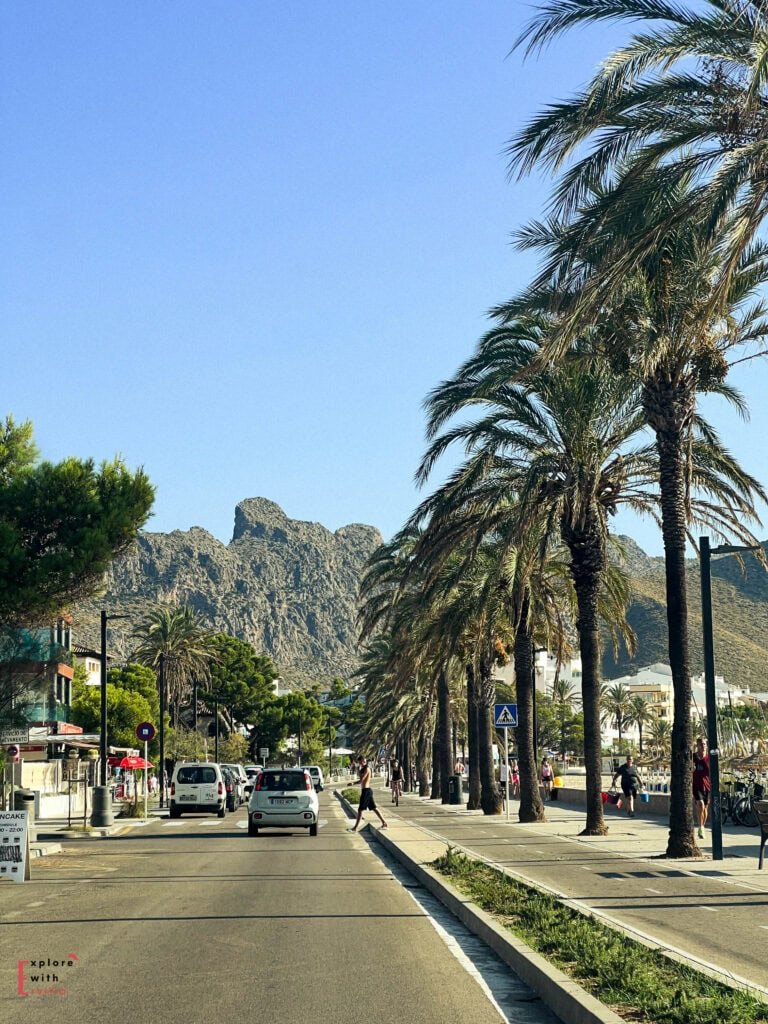
3. Become a Strategic Early Riser
Some of Mallorca’s most breathtaking locations require arriving before the crowds. Some places are so secluded , with hard access and not much parking space, that you just have to go see them first thing in the morning. That means 6 am, not after breakfast!
Set your alarm for these must-visit spots:
- Sa Calobra beach: Arrive at sunrise (we tried for sunset and found it still crowded and could not find a parking place so we actually had to go right back up the mountains)
- Deià Village: Magical in early morning light before tour buses arrive (we where there at 7h in the morning and there were already people walking the streets)
- Cap de Formentor: Only accessible until 10 AM during summer months (after that, restrictions apply to avoid crowds, which means you could only go by bus, bike or a tour)
- Valldemossa: We parked at 7 AM, and by 8:30 AM, no spaces remained
So, pack breakfast to enjoy at these stunning locations while watching the crowds arrive later, or make your visit before the breakfast time of your hotel. This way not only assures you avoid crowds but you also avoid the incredible heat that you can experience in Mallorca in august.
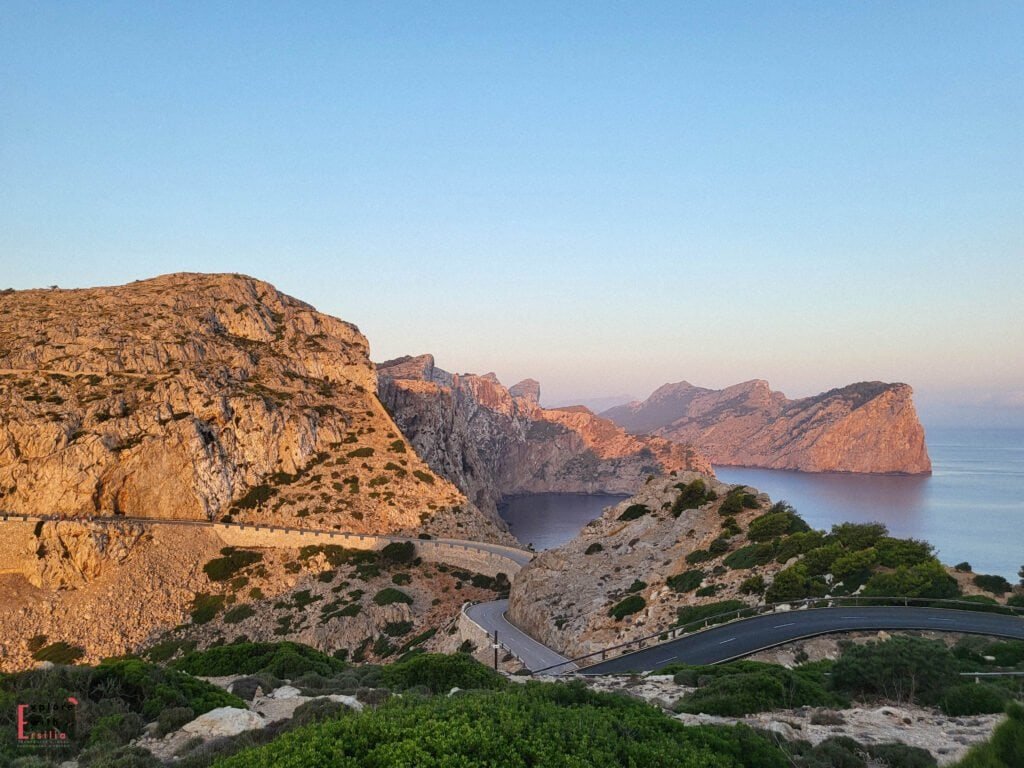
4. Discover Secluded Beaches Beyond Instagram Hotspots
While everyone flocks to famous beaches, consider these alternatives:
- Boat-accessible coves: We rented a boat from Portocolom and explored the coastline toward Cala d’Or, finding incredible snorkeling spots with barely anyone around
- Hike-in beaches: Beaches requiring a moderate walk usually have significantly fewer visitors
- Northern coast beaches: Typically less crowded than the eastern and southern shores
According to local tourism data, beaches accessible only by boat or foot can have up to 80% fewer visitors even during peak season.
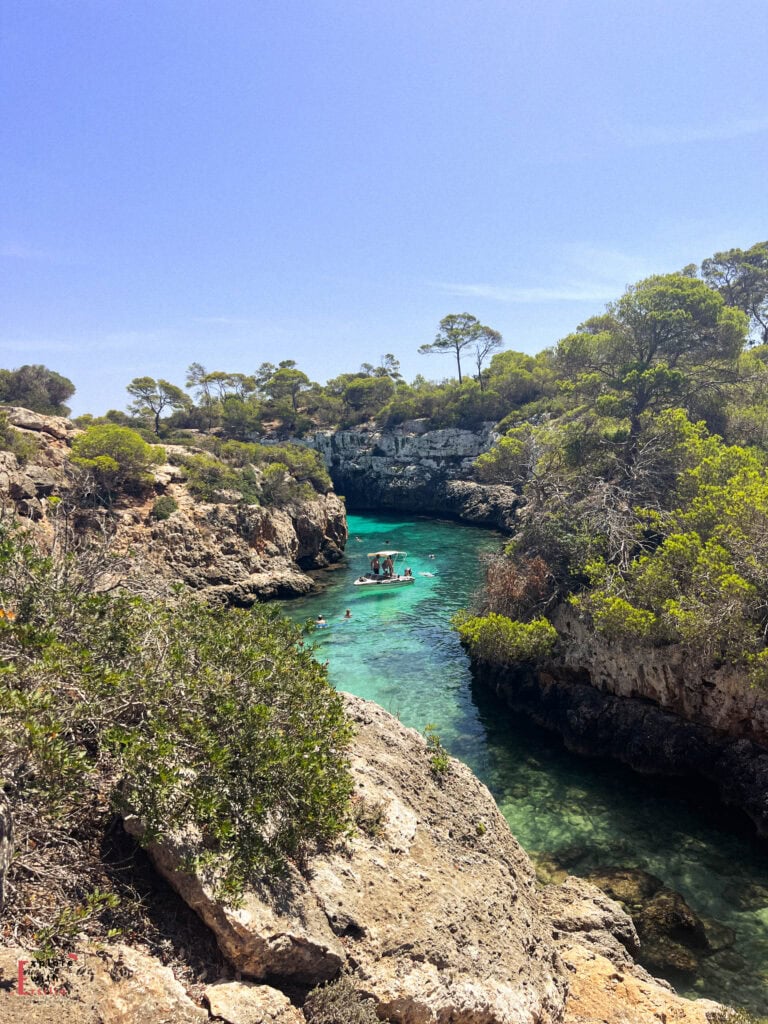
5. Explore Cultural Sites When Others Hit the Beach
While most tourists head to the beaches between 10 AM and 4 PM, cultural sites remain relatively peaceful during these hours.
One of our most memorable visits was to the Museu Etnològic dels Calderers – an authentic Mallorcan bourgeois house showing traditional island life. During two hours in August, we shared the entire museum with just one other family! This is an incredible place that is definetly worth a visit: beautiful landscape, beautiful architecture and incredible expositions of local life in Mallorca.
The Gardens of Alfabia (Jardines de Alfabia) were another good surprise. I absolutely loved walking among the plants, the place is incredible. We visited at around 14h in the afternoon, in August, and it did not felt too crowded.
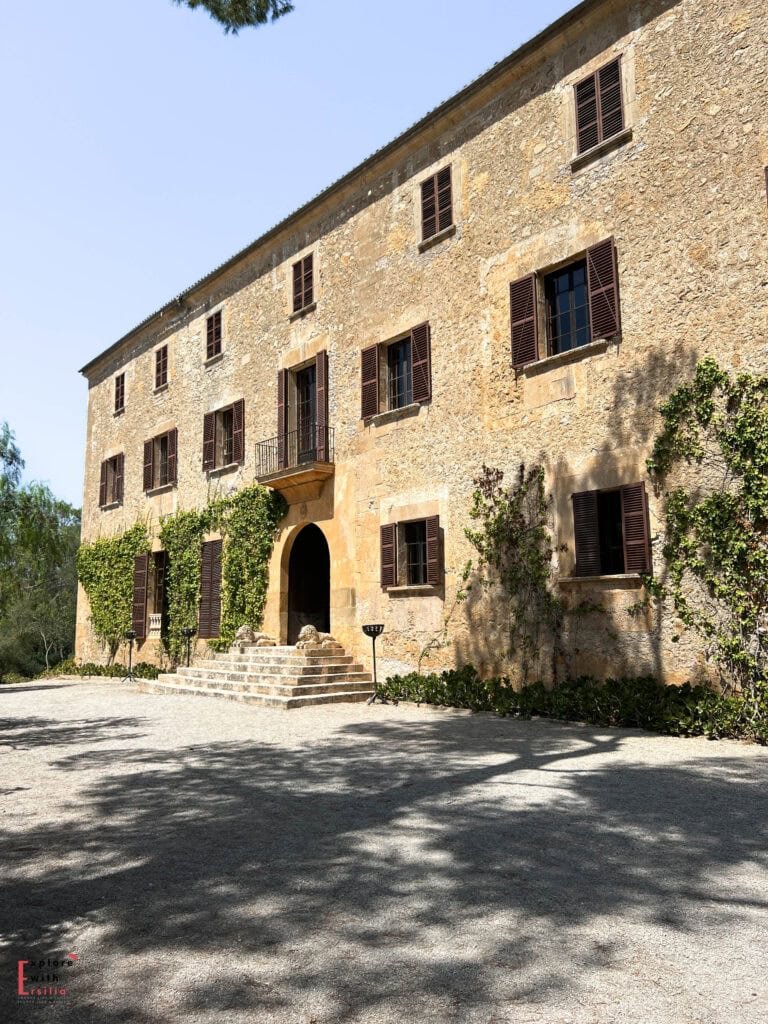
6. Book Accommodations Well in Advance (and Save Money)
Mallorca’s accommodations book quickly for peak season, with prices increasing dramatically as summer approaches. Palma is expensive and I AGREE.
But, you can manage doing it cheaper if you book in advance. Book your hotel and your car months in advance. This can make a difference of hundreds of euros for the same reservation.
Staying at a traditionnal finca will also have a huge impact on your trip: want less crowds? avoid the huge hotels on the coasts and stay at a Finca!
I could have never stay at Finca Ca N’ai if I wouldn’t have booked in advance. I secured a stay for €800 for three nights instead of the typical €350-400 per night by booking months ahead.
This was the best choice we made for our trip (we stayed in 3 different places during our two weeks stay, which also helped in being close to the sites we wanted to see and being able to see them early in the morning).

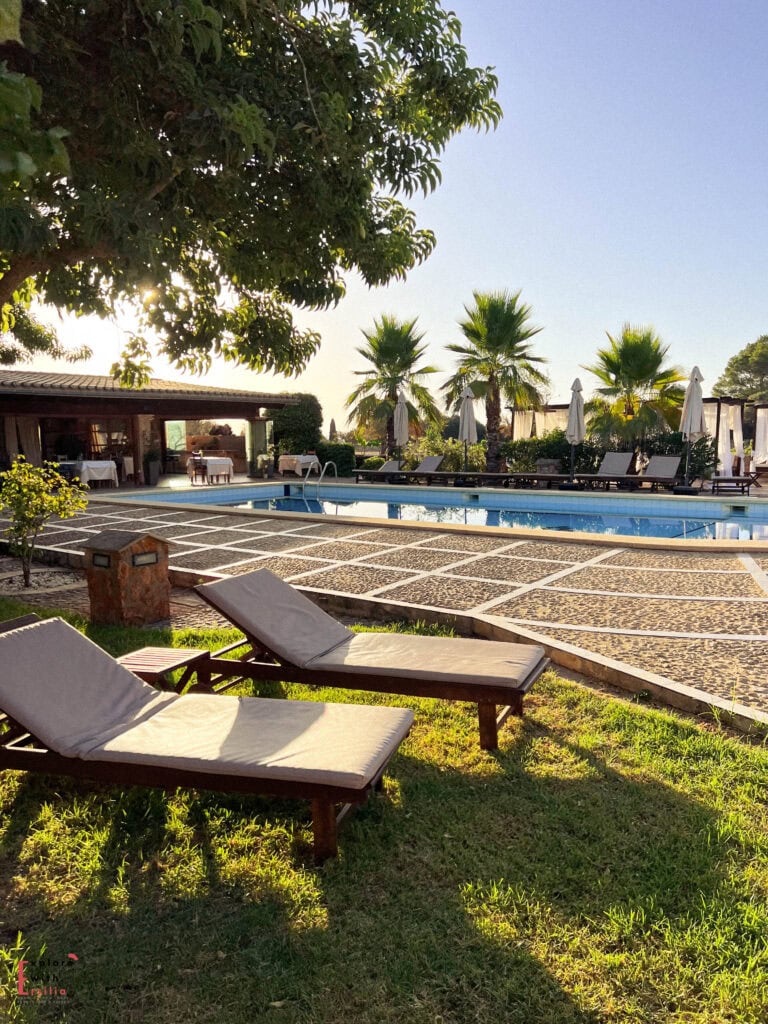
Agroturismo Es Quatre Cantons
The place I was telling you about, in the center of the donnut! It is situated in Binissalem, you need a car to get there, but honestly it is totally worth it! Incredible atmosphere that really shows you how the (upscale) mallorcan life style feels.
Great building, great services and incredible breakfast on the terrace in front of the pool!


Hotel Rural Son Terrassa
The place is a great option for staying close to the most famous calas in Mallorca. The service is top quality and the setting is incredible.
I wrote about our stay with all the details, here.

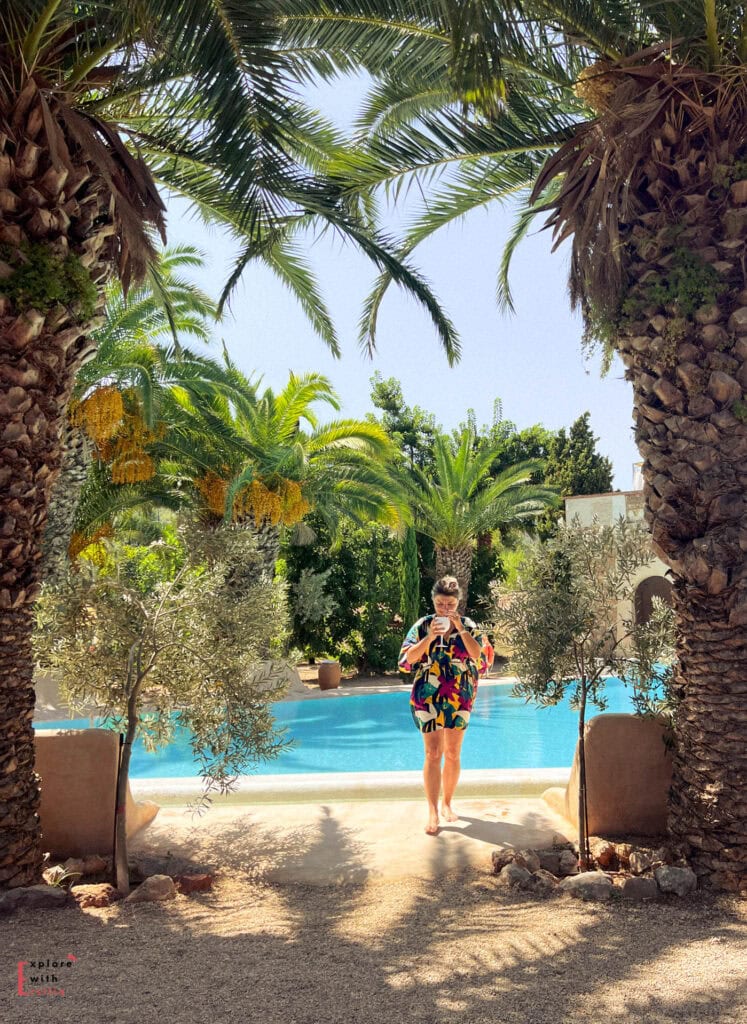
Finca Ca N’ai
This place was my favourite! I hinted it will be the case, so I saved it for last.
This is true Mallorcan luxury, in an incredible private valley with view over Soller Town at with the traditionnal tramway that stops just at the entry!
You can read all about our stay at Finca Ca N’ai here.
Actually, a statistic showed that the cheapest month to book hotels in Mallorca is November, with average rates of €135 per night.
Booking early provides:
- Better selection of accommodations (choose farm stays instead of huge tourist hotels! we stayed in 3 different places and never had to fight for sunbeds, even in August!)
- Significantly lower rates
- Access to properties that completely sell out during summer
- More room types to choose from (if you like to choose, like me)
The same applies to car rentals – reserving early can save hundreds of euros, giving you both better rates and more vehicle options. Car rental prices in Palma de Mallorca vary significantly by season, with January being the cheapest month at $2.66 per day and August the most expensive at $33.92 per day.
Last-minute summer bookings in Mallorca can see price increases of up to 50% over advance rates.
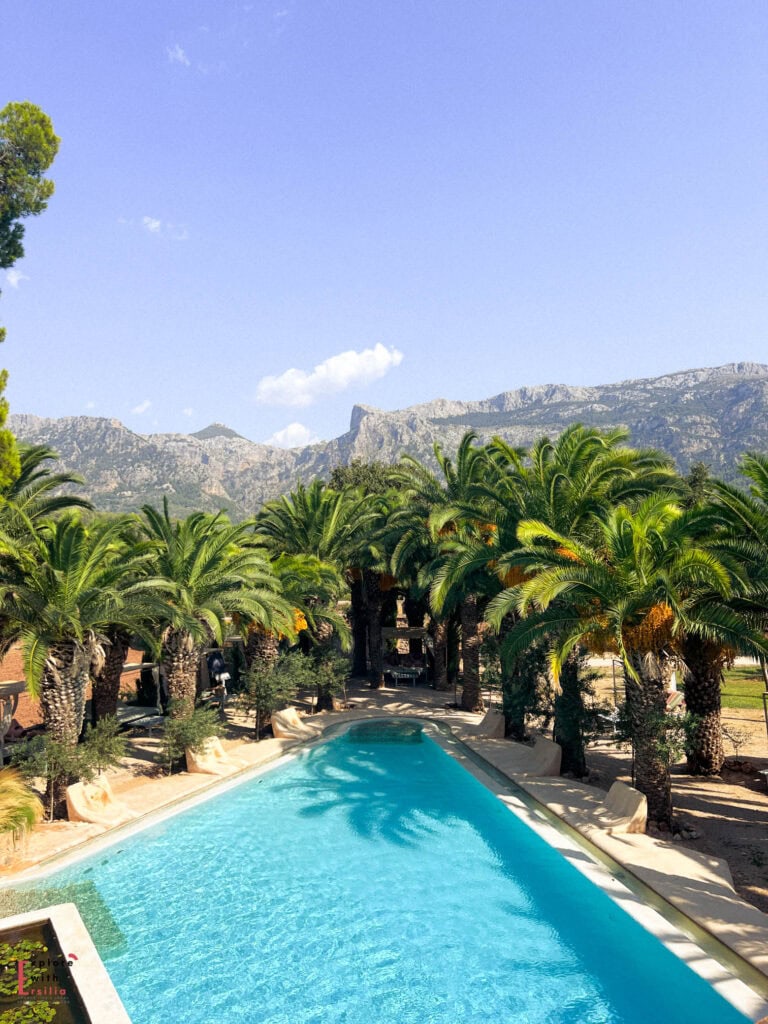
Price comparison for quiet vs crowded areas in Mallorca
The same statistics that I already mentinned, said that July is the most expensive month for hotels in Mallorca, with average rates of €560 per night. So, obviously, the question we all ask is how to get the best hotel with the cheapest rate and in which part of the island?
Well, I studied a wide range of hotels (more than 300 hundred), and I could see a huge price different between different zones.
- Palma de Mallorca – As you noted, the capital city is expensive, particularly for accommodations. Hotels with pools are “a luxury” due to limited space. But you can find budget hotels in Palma de Mallorca for as low as €62 per night in summer, they would just have les amenities.
- Southwest Coast (Puerto Portals, Port d’Andratx) – These upscale marina areas attract wealthy visitors and have some of the island’s most expensive real estate and dining.
- Deià and the Northwestern Coast – This area is known for luxury hotels and high-end restaurants. Your document mentions restaurants like Ca’s Patro March in Cala Deià that are exclusive partly because they’re harder to reach.
- Southeast Beach Resorts – areas like Cala d’Or that have upscale resorts and beach clubs are very expensive and crowded during summer.
- Port de Pollenca – expensive due to a high number of luxury hotels, but you can also find good prices if you book in advance.
Rural hotels in Mallorca’s interior regions tend to be 20-30% cheaper than coastal hotels, if you compare the services and quality that they offer to the ones on the coast.

7. Should you drive in Mallorca in August?
Rent a Car (But Use It Strategically)
If you ask yourself if you should drive while being in Mallorca, the answer is yes, BUT you should choose when to drive. Having a car is essential for escaping the crowds, but timing is everything:
- Drive early in the morning (6-9 AM) when many tourists are still sleeping
- Park slightly farther from attractions to avoid the most congested lots
- Use your car to reach less accessible villages like Banyalbufar and Fornalutx
- Consider smaller vehicles that navigate Mallorca’s narrow village streets more easily
Did you know? Car rental prices can double or even triple during July and August compared to shoulder seasons.
8. Consider Alternative Transportation in Palma and other coastal towns.
If staying in or near Palma, consider these alternatives to driving:
- Rent bikes to navigate the city (Hotel Ciutat Jardi offers rentals and connects to Palma’s old town via a dedicated cycling route)
- Use the efficient bus network that connects major attractions
- Consider staying at hotels with good public transport connections
Port de Pollença and Alcudia also have a beautiful bike path that you can enjoy.
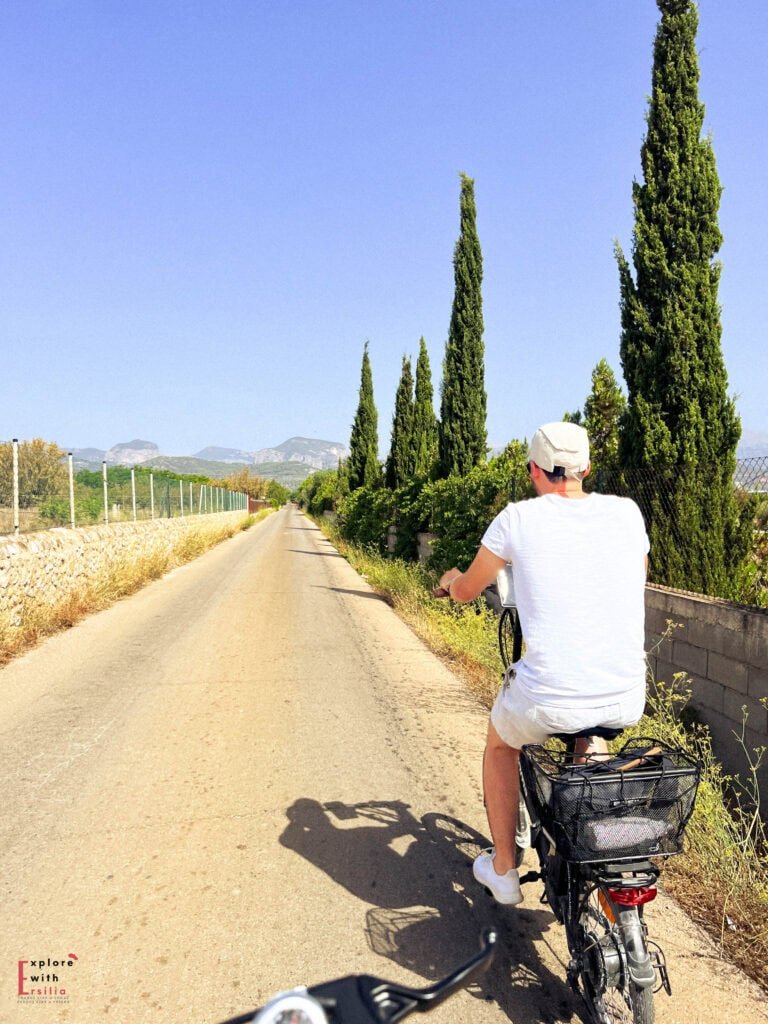
9. Seek Out Restaurants That Require Effort to Reach
Some of Mallorca’s most renowned restaurants aren’t crowded for a reason – they require commitment to visit!
Places like Ca’s Patro March in Cala Deià and Sa Foradada near Deià are accessible only by hiking or boat, naturally limiting visitor numbers while providing some of the island’s most memorable dining experiences.
10. Explore Lesser-Known Villages and Inland Attractions
While everyone else fights for beach space, these inland locations offer authentic experiences with minimal crowds:
- Andratx: A charming town with local character. There is also the Port of Andratx that opens to the sea with beautiful views.
- Banyalbufar: Stunning terraced landscapes with spectacular views
- Pollença village: Much quieter than its port counterpart, but incredible for its stone buildings and the famous stairs that connect the old center with the chappel. (avoid it if it’s too hot!)
- Felanitx: An authentic town with weekly markets
- Fornalutx: Often called one of Spain’s most beautiful villages
Local insight: These inland towns typically see 70% fewer tourists than coastal areas during peak summer months.
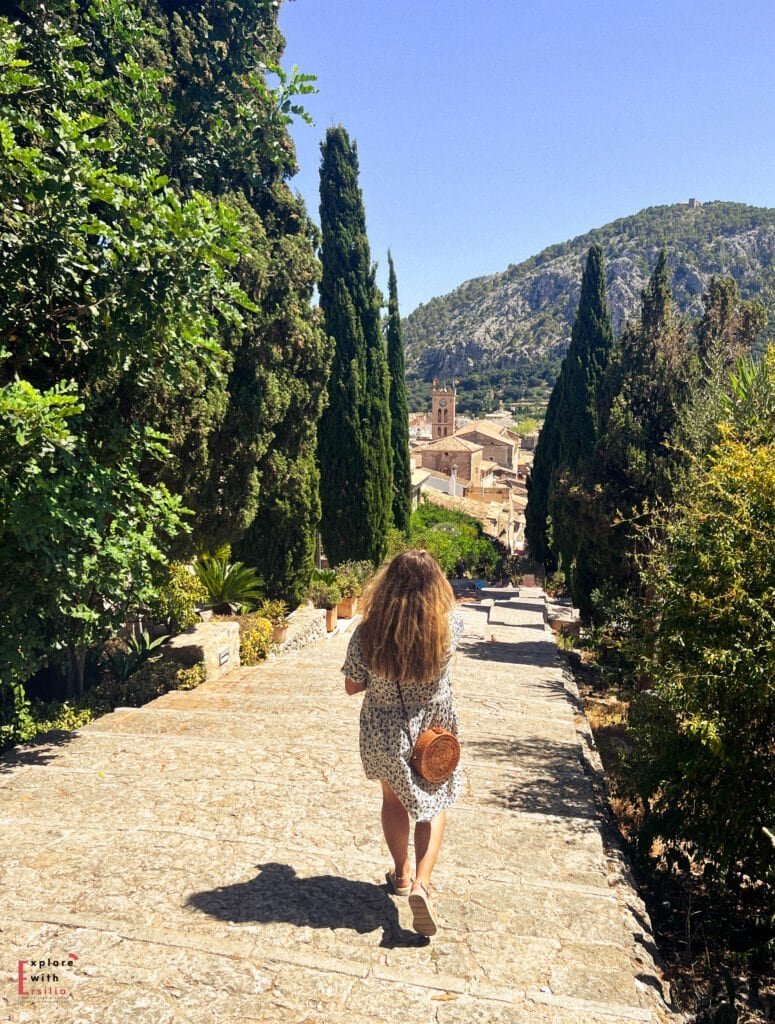
Beyond the Beaches: Mallorca’s Hidden Cultural Treasures
While Mallorca’s beaches draw most visitors, the island offers rich cultural experiences that many tourists miss:
- Traditional agricultural estates: Visit working farms that demonstrate Mallorca’s agricultural heritage
- Olive oil production: Many inland farms offer tastings of locally produced oils
- Wine regions: The central “donut hole” contains some of Mallorca’s finest vineyards with tastings available
- Historic monasteries: Sites like Lluc Monastery provide peaceful cultural experiences
- Local festivals: Check town calendars for authentic local celebrations
But still, what are the least crowded beaches in Mallorca?
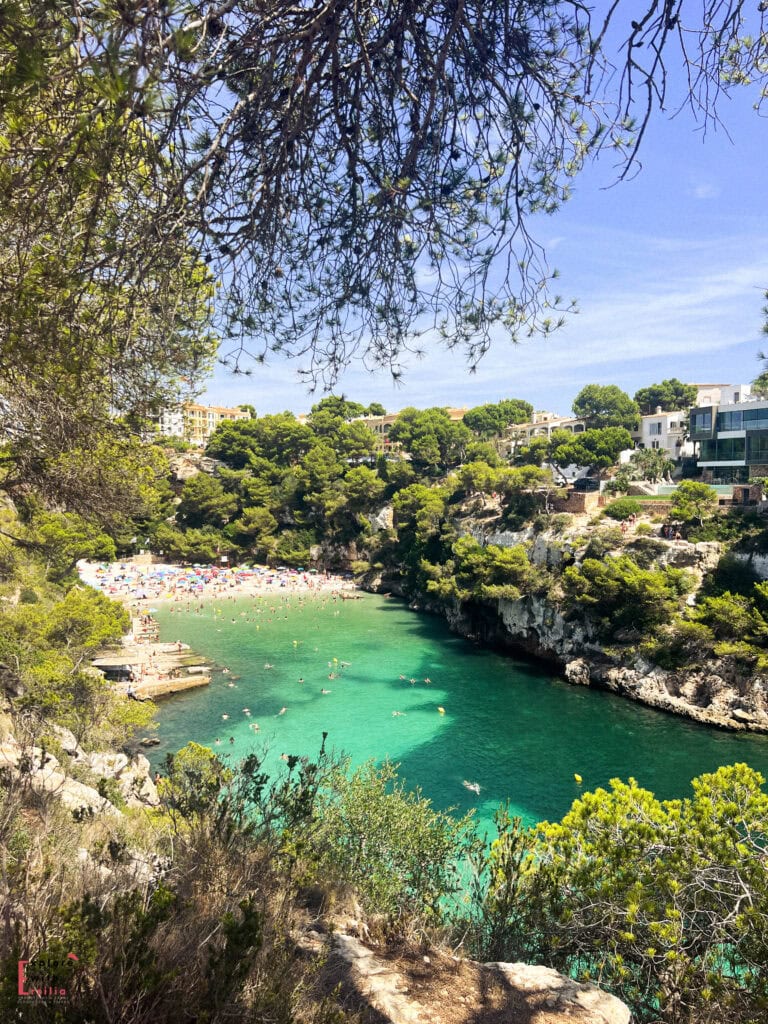
While everyone hunts for the Instagram-famous beaches, I discovered some truly beautiful AND LESSER KNOWN beaches during my trip.
The secret to finding uncrowded beaches in Mallorca? Look for spots that require extra effort to reach – whether by hiking, boat, or simply driving to less-accessible areas of the island.
Here’s my list of Mallorca’s best-kept beach secrets that remain peaceful even in August:
- S’Illot / Cala Victoria: A secluded area with dramatic rock formations, towering cliffs, and turquoise waters far from mass tourism. The views stretch across Cap de Formentor and the entire Bay of Pollença, making the effort to reach it worthwhile.
- Cala Sant Vicenç: This former fishing village features four distinct coves with breathtaking views of the Serra del Cavall Bernat cliffs (365m high) that plunge directly into the sea. These dramatic landscapes have inspired many artists over the years. Arrive before 10 AM to secure parking.
- Cala Figuera (Formentor): Not to be confused with the more famous Cala Figuera near Santanyí, this hidden gem on the Formentor peninsula requires a hike to reach. The narrow cove with turquoise waters, cliffs and beautiful rock formations makes it ideal for snorkeling.
- Cala Murta: Located across from Cala Figuera on the southern side of the Formentor peninsula, this quiet cove is slightly easier to access than its northern neighbor. Despite this, I found only a handful of visitors during my August trip!
- Platja Tuent / Cala Tuent: Near the famous (and crowded) Sa Calobra lies this peaceful alternative. While hundreds gather at Sa Calobra, I counted barely twenty people at this crescent-shaped beach with dramatic mountain backdrops.
- Isla de Sa Dragonera: This uninhabited island at Mallorca’s westernmost point became a natural reserve in 1977 thanks to environmentalists who prevented development. The narrow island (3.2 km long, 500m wide) features dramatic terrain rising to 360m. Take a boat from Sant Elm to reach it and enjoy hiking trails leading to secluded swimming spots.
- Cala Beltran: One of Mallorca’s few truly untouched calas, accessible only by a 30-minute hike from Cala Pi. This narrow cove has no beach but offers picturesque turquoise waters, white rocks, and lush greenery. During peak August, I counted only seven other visitors!
For all these hidden beaches, remember to pack everything you’ll need (most have no facilities), wear proper footwear for rocky terrain, and consider bringing snorkeling gear to explore the clear waters. The extra effort required to reach these spots is exactly what keeps them peaceful – your reward is experiencing the authentic Mallorca that most tourists never see, even in August!
When Should You Visit Mallorca to Avoid Crowds?
If your schedule allows flexibility, consider these alternatives to peak season:
- May and October: Near-perfect weather with significantly fewer tourists
- April and November: Occasional rain but dramatically lower visitor numbers
- Winter months: Perfect for hiking, cultural experiences, and authentic village life
However, if summer is your only option (as it was for mine), don’t despair! By implementing the strategies above, you can experience an authentic, uncrowded Mallorca even during peak season.
My Personal Revelation About Mallorca in August
I honestly almost canceled my August trip to Mallorca, convinced I’d made a terrible mistake booking during peak season. Instead, it transformed into one of the most memorable two-week vacations I’ve ever experienced.
By staying in the island’s center, rising early, seeking out lesser-known spots, and occasionally putting in extra effort to reach secluded locations, we enjoyed an authentic Mallorca that many tourists never discover – even in the height of summer.
The island revealed itself as a destination of incredible diversity, where tranquil mountain villages, historic sites, and hidden coves exist just minutes away from (but worlds apart from) the crowded tourist centers.
So if you’re hesitating about visiting Mallorca during busy season, don’t! With these strategies, you can experience the island’s magic without feeling like you’re sharing it with all of Europe. The real Mallorca is still there, waiting to be discovered by those willing to look beyond the obvious.
Have you visited Mallorca during peak season? What were your experiences with avoiding crowds? Share your thoughts in the comments below!
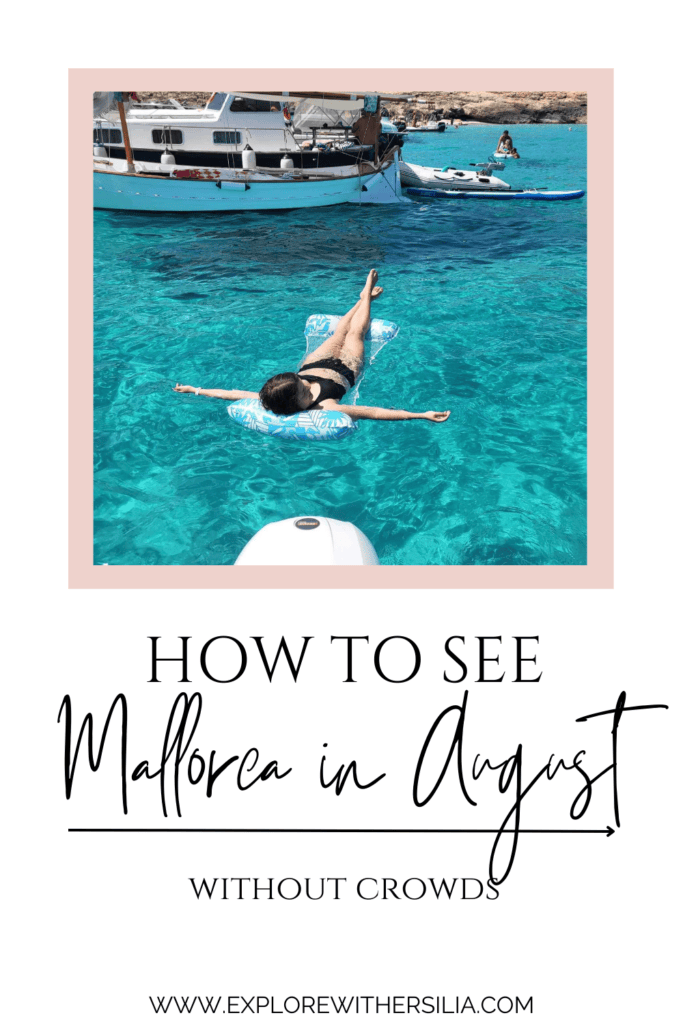
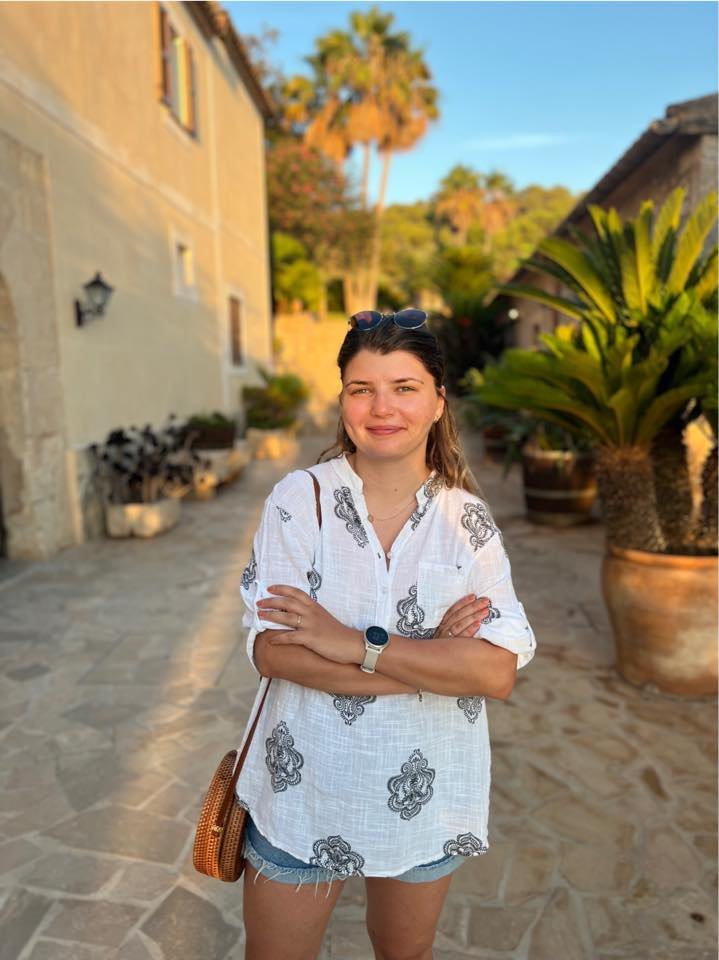
author page / EDITORIAL POLICY PAGE
Hi, I’m Ersilia

Toulouse, France

Originally from Romania

English & French Content
As a Romanian expat living in the heart of southern France, I guide English speakers to discover authentic French experiences without the language barrier. My unique perspective as both a local and an expat allows me to share insider tips, cultural insights, and practical advice that you won’t find in typical guidebooks.
My Expertise:
- French life and culture navigation
- Hidden gems across French regions
- Eastern vs Western European perspectives
- Local insights and practical travel tips
Blog Socials
Personal Pages

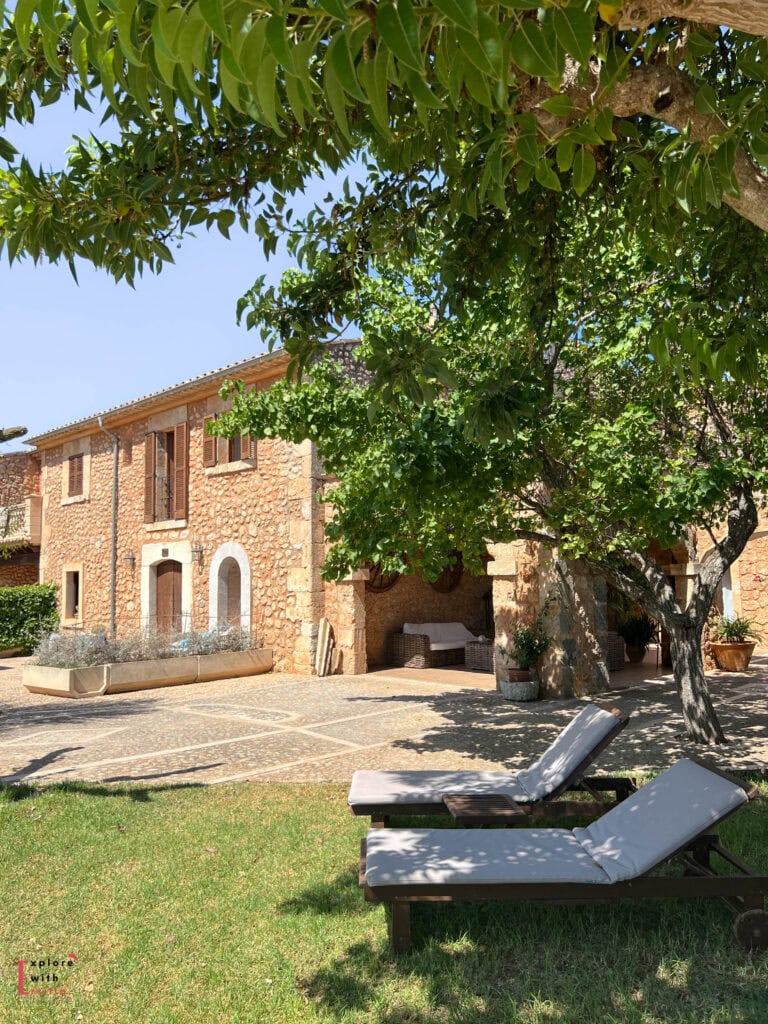
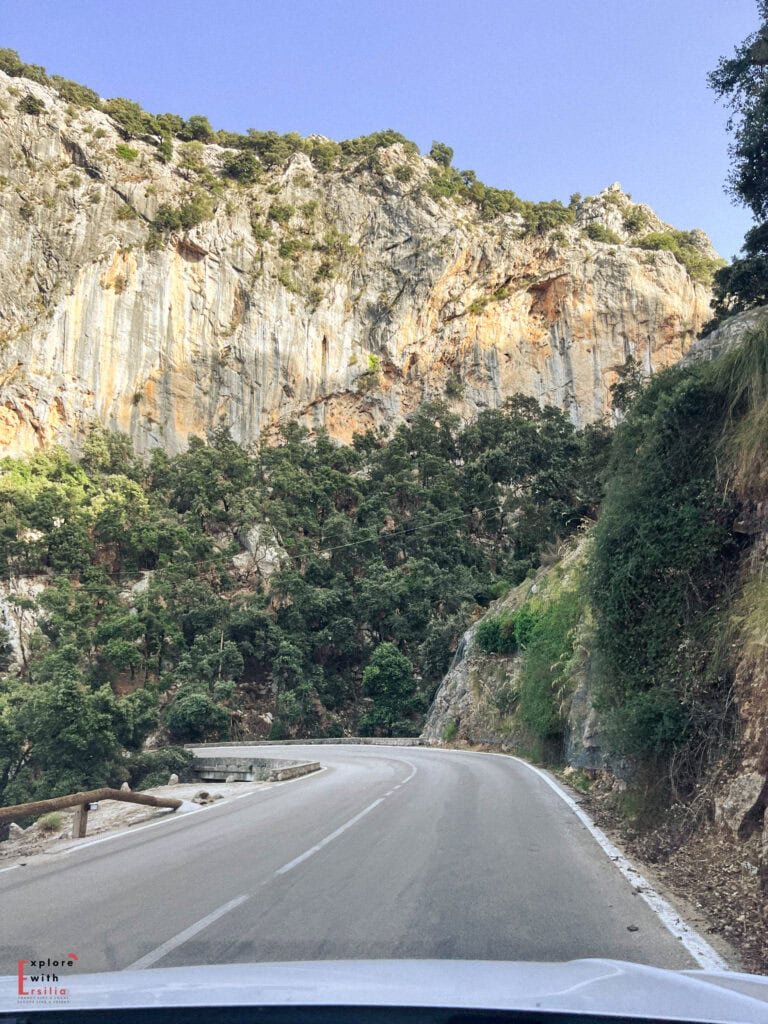
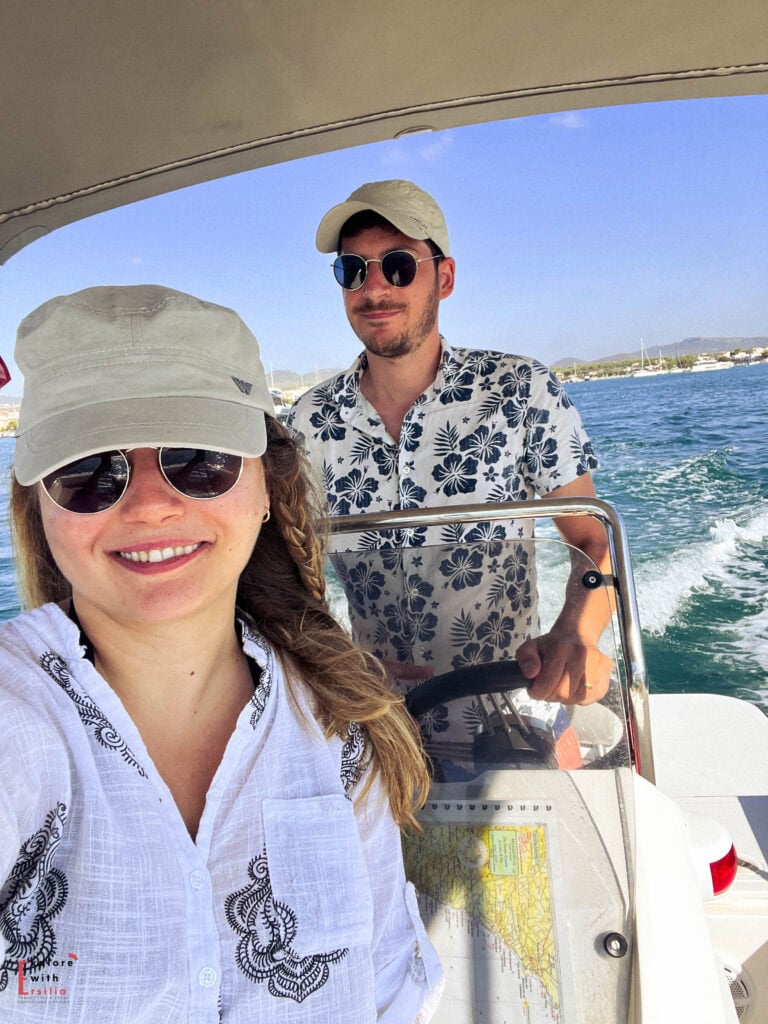
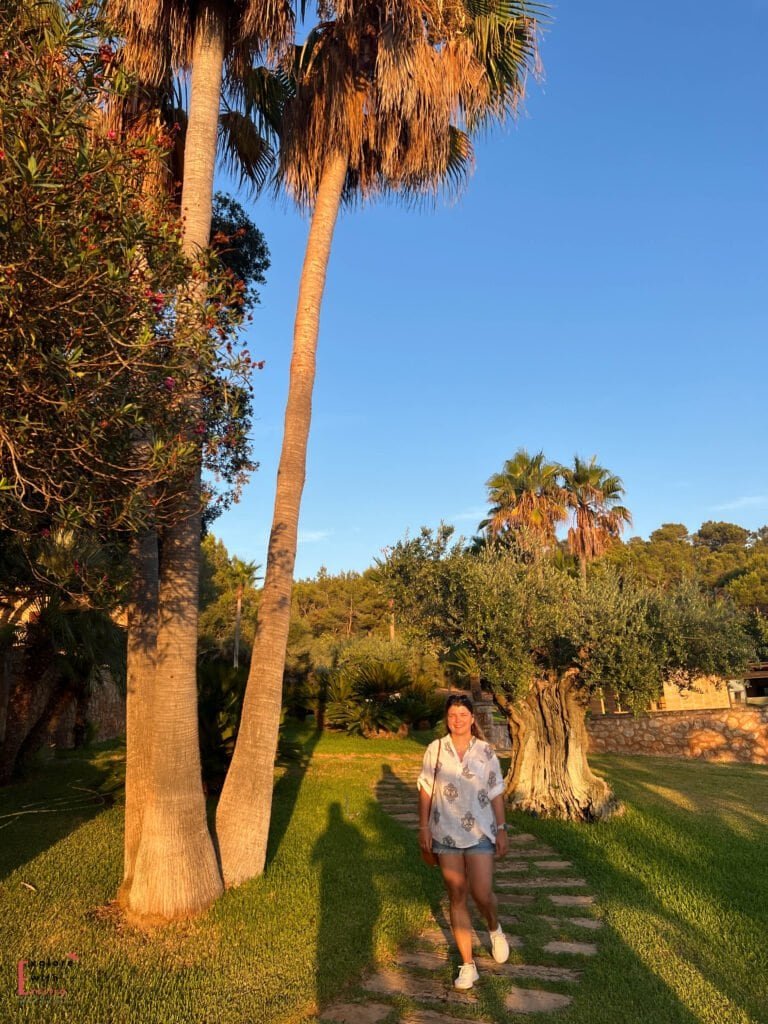
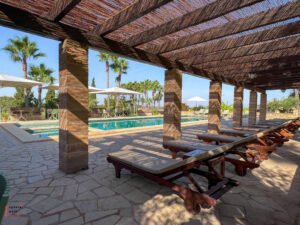
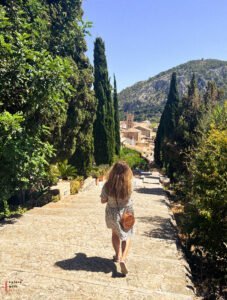
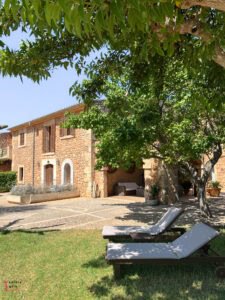
We spent one day here while on a cruise and I really want to go back. Thanks for all of these great tips!
even after 2 weeks, I want to go back! I loved this place!
Love the idea of renting a boat to get to remote beaches, sounds like such a fun way to explore.
we often do it 🙂 we love it!
My husband and I love to travel outside of the main tourist areas. They are less crowded, allow for slow travel, and offer a totally unique experience.
I completly agree!
absolutely loved this! it’s so refreshing to see a take on Mallorca that doesn’t start and end with the beach crowds and party towns… ive become so averse to hugely touristed areas in recent years; there’s just something more magical about finding the quiet pockets of a place when everyone else is looking the other way! ♡
happy to see this comment ! and I agree with you! I was honestly afraid of Mallorca because of the crowds, but these places made it an incredible trip!
This is such a helpful post. I’d like to visit Mallorca and your tips about going off of the beaten path and trying new things are right up my alley!